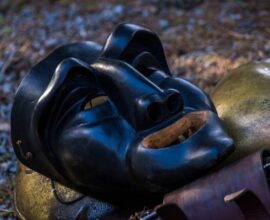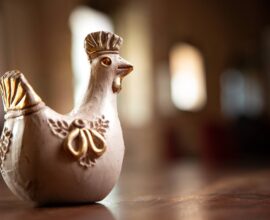Hibiscus: properties, characteristics and curiosities about this remarkable flower growing in Forte Village’s garden
Hibiscus, a treasure chest of virtues and qualities
A discovery journey to hibiscus, a flower of rare beauty, and Karkadè its infusion.
Forte Village, the elegant green and sustainable resort in Santa Margherita di Pula, in the province of Cagliari, features a park that is an oasis of nature and beauty as well as a treasure chest of biodiversity where the colours and scents of the Mediterranean scrub blend with the exotic charm of tropical vegetation.
In this fabulous setting, in addition to species such as aloe, yucca and bamboo, grows hibiscus (botanical name Hibiscus), a delicious shrubby plant of the Malvaceae family also known as “Abyssinian Tea”, “Pink Tea” or “Karkadè”.
Originally from the West Indies, it is also widespread in Ethiopia, Sudan, India, and Sri Lanka. Europe is cultivated mainly for ornamental purposes because of its flowers’ beauty and ease of care and maintenance.
There are over 400 species of Hibiscus existing in nature but among the best known in the Italian territory, we must mention the Hibiscus cannabicus, from which a textile fibre similar to jute is obtained, the Syriacus, which embellishes parks and gardens with its wonderful flowers between July and October, the Hibiscus rosa-sinensis, whose flowers have beautiful colours ranging from yellow to red, and the Hibiscus sabdariffa, whose flowers are infused to make the karkadè drink and utilised in phytotherapy.
Hibiscus, a true natural panacea
Hibiscus flowers boast antipyretic, analgesic, anti-inflammatory, antioxidant and antibacterial properties, and are effective in treating mild and moderate hypertension and fighting cholesterol.
Hibiscus is also used to help with colds, circulatory disorders, phlegm, loss of appetite and as a mild diuretic and laxative.
In phytotherapy, the flowers are usually the main ingredient but in some herbal preparations the roots, seeds and leaves are also used. For example, the roots, with their bitter taste, are excellent for the production of amaro, from the seeds is obtained an essential oil with cholesterol-lowering properties while the leaves are excellent in salads thanks to their diuretic sedative, emollient and refreshing properties.
Hibiscus is a true natural cure for all ailments.
In addition to the benefits mentioned above, it should be noted that the aqueous extracts of hibiscus can help lose weight through a process of regulation of metabolism and that the plant can be beneficial in fighting some bacterial infections, in particular those caused by Escherichia Coli (bacterium responsible for various gastrointestinal disorders) and by the Methicillin-resistant Staphylococcus aureus (bacterium capable of causing serious damage to the body including sepsis, abscesses and pneumonia).
Scientific studies have also shown how hibiscus promotes liver health by improving hepatic steatosis and how, thanks to its richness in flavonoids, it can exert an interesting antidepressant function and appease the nervous system by lowering anxiety levels.
Furthermore, it improves digestive processes, regulates gastrointestinal movements, prevents the formation of kidney stones, and is a rich source of antioxidants, which is useful in preventing damage caused by free radicals.
Fill up on well-being with hibiscus.
A refreshing and demineralizing herbal tea is the best way. This infusion can be taken after the main meals to promote digestion or as a hypoglycaemic and diuretic tisane.
Let’s not forget that Hibiscus also stands out in cosmetics: hibiscus powder has a soothing, exfoliating and antioxidant action on the skin, ideal for obtaining a deep cleansing, relieving redness and irritation, and preventing cellular ageing.
Last but not least, the powder mixed in hot water proves to be optimal for giving softness, volume and a violet tinge to hair.
Curiosity and symbolism of Hibiscus
“Hibiscus” derives from the Greek term “hibiskos”, the name that the botanical physician Dioscorides gave to plants that resembled marshmallow.
Many meanings are connected to this beautiful plant: the elegant beauty of young girls, youth and positivity, all elements related to the softness of the flower, its pleasant appearance and its short duration. They last only a day before withering, like beauty and youth.
Hibiscus flowers then take on a different spiritual meaning for different cultures: in Malaysia, it is the symbol of the State and represents vitality, in Korea it means mortality, in China it is associated with fame, wealth and glory, in Hawaii it symbolises power, hospitality and respect, in Singapore it is the “flower of celebration” while in North America it is given to one’s partner to show admiration and love.
Still, they are known to ward off negativity and evil and, depending on the colour, boast an even more specific symbol: yellow means good luck, sun and joy, white purity and innocence, red passionate love, purple mystery and superior knowledge, pink friendship and all kinds of love.
The hibiscus plant grows in the form of shrubs or trees that can reach several meters in height and attract a multitude of butterflies and hummingbirds.
Would you like to experience a fabulous holiday in an authentic paradise? Discover Forte Village Resort in Sardinia






